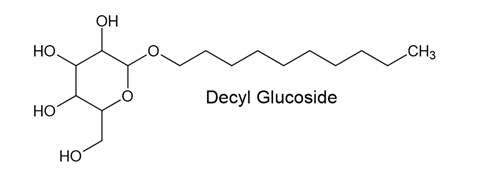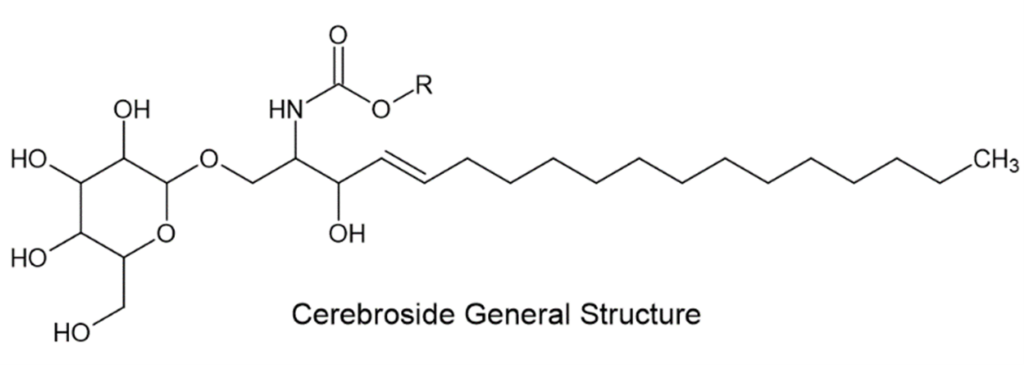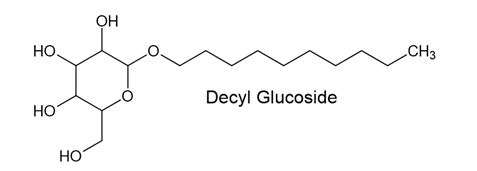Decyl Glucosid: A Glycolipid Sugar Tenside

Decyl glucoside is a non-ionic surfactant derived from glucose and decyl alcohol.

The molecules are combined in a reaction known as glycosylation. Decyl glucoside is a glycolipid, a type of lipid with a carbohydrate component. In the case of decyl glucoside, a glucose molecule (a carbohydrate) is attached to a decyl alcohol (a lipid), forming the glycolipid structure.
Interestingly, the structure of decyl glucoside closely resembles cerebrosides, a class of glycolipids present in various tissues such as the skin and brain [1-3].

Mechanism of action:
Decyl glucoside is a non-ionic surfactant that works by disrupting the surface tension of water. This allows water to better penetrate and remove dirt, grease, and other impurities. Its mechanism of action is as follows:
Micelle Formation: When decyl glucoside is added to water, it forms micelles. These are tiny, spherical structures with a hydrophilic (water-loving) head and a hydrophobic (water-hating) tail.
Dirt and Grease Entrapment: The hydrophobic tails of the micelles attract and surround dirt and grease particles.
Emulsification: The micelles then form an emulsion with the dirt and grease, suspending them in the water.
Rinsing: When the water is rinsed away, the micelles and their trapped dirt and grease are also removed, leaving the surface clean
Safety information Summary:
| LD50 Oral | >2000 mg/kg | [4] |
| LD50 Dermal | >2000 mg/kg | [4] |
| NOAEL | 1000 mg/kg bw/d | [5] |
| Skin irritant | Negative | [4] |
| Eye Irritant | Irritating to the eyes | [4] |
| Mucous membrane irritation | No aspiration hazard expected | [4] |
| Skin sensitization | no evidence of a skin-sensitizing potential | [4] |
| Mutagenicity | The chemical structure does not suggest a specific alert for such an effect. | [4] |
[1]Müller et. al., “Synthesis of Unique Ceramides and Cerebrosides Occurring in Human Epidermis”, Helvetica, Vol.76 (1), 1993, pp. 616-630
[2]Podbielska et al. “The structural and functional role of myelin fast-migrating cerebrosides: Pathological importance in multiple sclerosis.” Clinical Lipidology, 6(2), (2011), pp. 159-179.
[3]Tracey et al., “Neuronal Lipid Metabolism: Multiple Pathways Driving Functional Outcomes in Health and Disease”, Mol. Neurosci., 11 (10), 2018, pp. 1
[4] Decyl Glucoside, Material Safety Data Sheets (MSDS), Chemistry Connection, 255 Sturgis Road, Conway, AR. 72034
[5] “Decyl Glucoside and Other AlkylGlucosides”, CIR Expert Panel Meeting, 1101 17th St. Washington DC. 20036-4702 June, 2011.

